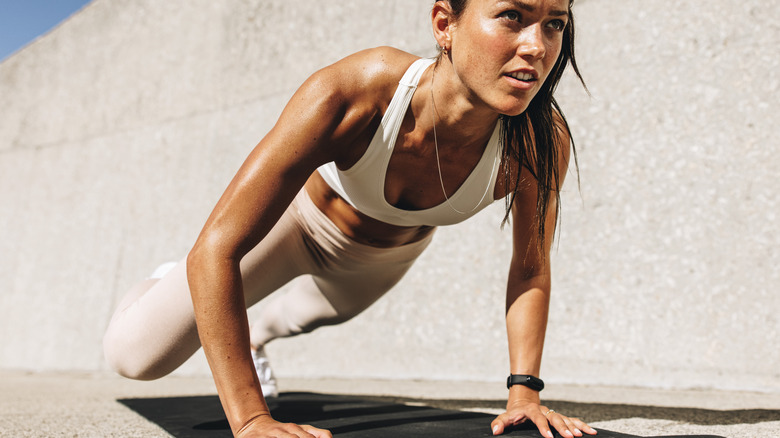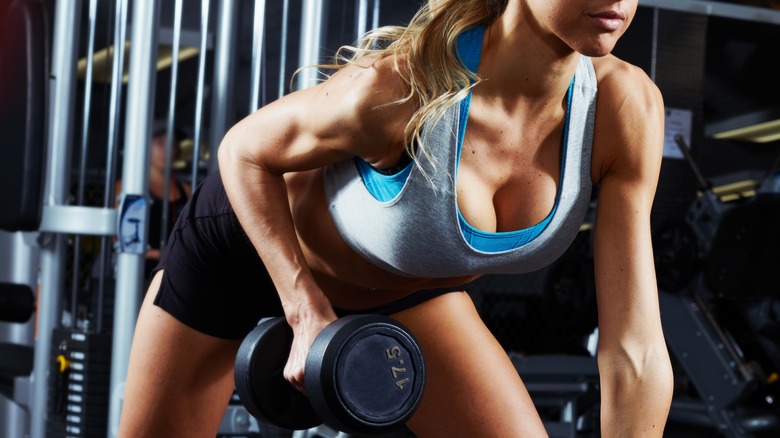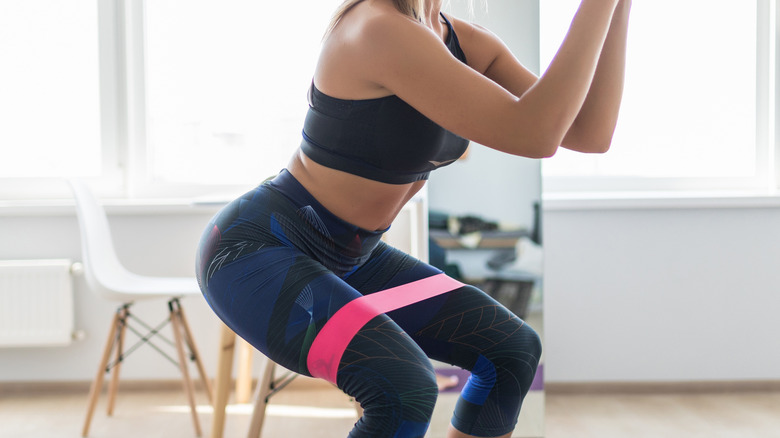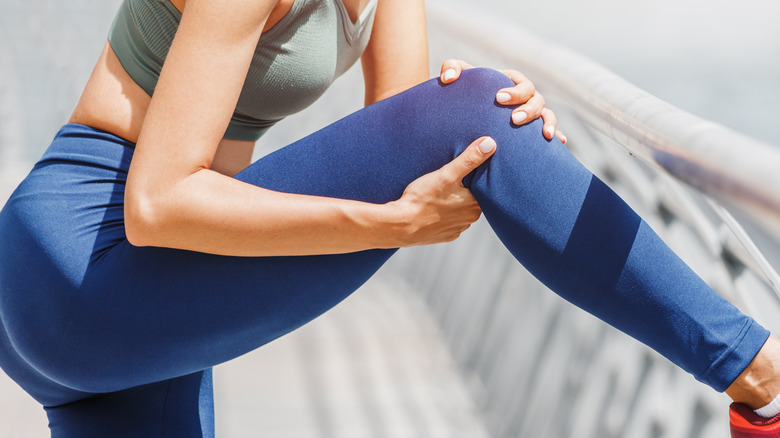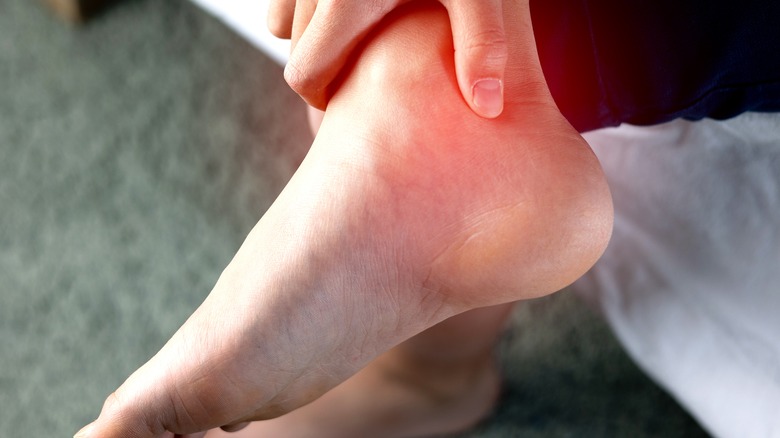The Most Important Places To Exercise That You're Probably Missing
After Jane Fonda's high-impact aerobics videos became all the rage among Americans in the 1980s, the fitness craze began to sweep the Western world. With physical activities being increasingly commercialized, ever-morphing overhyped fitness programs send people into a maze. From compound exercises to Tabata, there's too much information to digest for a simple 10-minute workout. For newbies who can't differentiate yoga from Tai chi, the fitness world is like a buffet where the dishes are similar in all but name.
You're not alone if you've found yourself staring at an unending list of YouTube-recommended fitness videos and not knowing where to begin. Not everyone can keep up to date with the latest trends. But here are some unchanging facts to remember: Your body is home to roughly 600 muscles, and all exercises fall within six movement patterns including squat, lunge, bend, push, pull, and core, per OPEX Fit. These movements can be found in aerobics, stretching, strengthening, and balance exercises. Rather than doing only what you think is the most effective, says physical therapist Rachel Wilson (via Harvard Health Publishing), combine all exercises to engage all your lazy glutes. For example, instead of focusing just on your belly fat in order to fit into a two-piece swimsuit, consider a full-body drill for added health advantages. Make sure you flex your muscles in these key areas of your body in your next workout.
Shoulders
As noted in a study in the Journal of Athletic Training, your shoulders, home to 20 muscles, are crucial in maintaining the widest range of motion in your body, from flexion to extension to abduction. Thanks to your shoulder, you can go about a broad range of movements, from carrying your bag to striking a golf ball. Due to their flexibility and versatility, your shoulders are also prone to muscle and ligament injuries, such as sprains, strain, and labrum tears. According to a 2019 review in StatsPearl, shoulder pain affects 18 million Americans per year, with rotator cuff tears being the leading cause. Shoulder injuries can result from overuse, slouching when seated, or an accident where the shoulder took a hit.
Since the shoulder is a complex joint, regular exercise to keep your its muscles active and coordinated is needed to forestall potential injuries. Some strengthening exercises you can try at home include shoulder elevation stretch, scapula rotation, and plank. Swimming and other aquatic workouts are also beneficial to shoulder motion.
Chest
When speaking of a well-built chest with defined pecs, our minds immediately go to a six-pack abs. Perhaps because such a sculpted physique is usually associated with the body of a man, we don't see many women getting keen to exercise their chests as much as men do. A good chest, according to Dr. Amy Ravindra (via Northside Hospital), can give you more than just an impressive physique. The chest muscles, made up of the pectoralis major and pectoralis minor, are responsible for upholding your posture and stabilizing our shoulder joint. In addition to that, strong chest muscles also aid in deeper breathing to slow the heartbeat and stabilize blood pressure. Aesthetically, pectoral exercises can facilitate the formation of muscle around your best tissue to give your chest area a lifted and firmer appearance.
To strengthen your chest muscles, as explained by physical therapist and coach Corinne Croce (via Forbes), simple exercises such as push-ups and tricep dips, if done with consistency, can work wonders. If you have dumbbells and a weight bench at home or work out at a gym, you can try a narrow grip chest press or incline bench press to strengthen your upper chest.
Hips
Although your hips are among the sexiest parts of the body, they are capable of more than just swaying and shaking. Your hips have 20 muscles, including the abductors, which dwell in the outer thigh, the hip flexors at the front, and the adductors in the inner thighs, per Bare Biology. If your hips are neglected from your strength training routine for too long, they will get weaker over time. Sports hernia, bursitis, and labral tears are some of the most prevalent causes of hip discomfort, as hip preservation specialist Dr. Shane Nho explained to Rush. A sedentary life that involves excessive sitting can also trigger hip flexor pain.
You may perform balancing exercises such as squats, single-leg hip circles, butterfly postures, and single-leg deadlifts to improve hip mobility, prevent soreness, and enhance circulation in your groin area. A fun, rhythm-based exercise that strengthens your hips and flattens your stomach is belly dancing, which you should include in your regular fitness routine.
Knees
A powerful set of knees allows you to walk, cycle, sprint, and climb with ease. They are the biggest joints in your body and handle the bulk of your body weight. Meanwhile, weak knees can cause terrible discomfort when participating in physical activity. Made up of bones, cartilage, ligaments, and tendons, the knees are vulnerable to dislocation, swelling, fractures, ligament sprains, and meniscus tears, per a study in the journal Sports Medicine. Even if the condition of your knees has little bearing on your overall physique, it is strongly recommended that you take care of your quadriceps and hamstring muscles. In fact, women are more likely than men to get knee injuries.
According to OrthoInfo, gentle stretching exercises may help improve the flexibility and mobility in your knee joint. Several exercises you can try three to four times per week include stretching quadriceps while standing, stretching supine hamstrings while lying on the floor, and squatting with your back against the wall.
Ankles
Serving as your body's connection to the ground, your ankles are responsible for withstanding the stress of body weight. For instance, sprain ankles make it impossible for you to stand or walk without feeling pain. The ankle consists of two joints: the inferior talocrural joint and the subtalar joint. As Twin Boro points out, any malfunction of these joints might cause ankle symptoms ranging from lateral malleolus fracture to rheumatoid arthritis. If you work in a job that requires a lot of movement, the ankle joints and surrounding muscles suffer a lot of wear and tear. Since ankle injuries can occur easily, what you can do is to boost the stability of your ankles so as to minimize your risk of injury. According to Verywell Health, simple movements you can perform regularly to strengthen your ankle joints include isometric exercises, resisted strengthening dorsiflexion, and seated and standing calf raises.
Flexing the muscles of these frequently ignored body regions not only helps to prevent injuries by increasing strength and stability but also enhances overall sports performance. Exercise is more than just a key to a flat tummy and toned thighs. To reap the most advantages from exercise, make an attempt to engage all of the sluggish muscles in both the upper and lower body.
